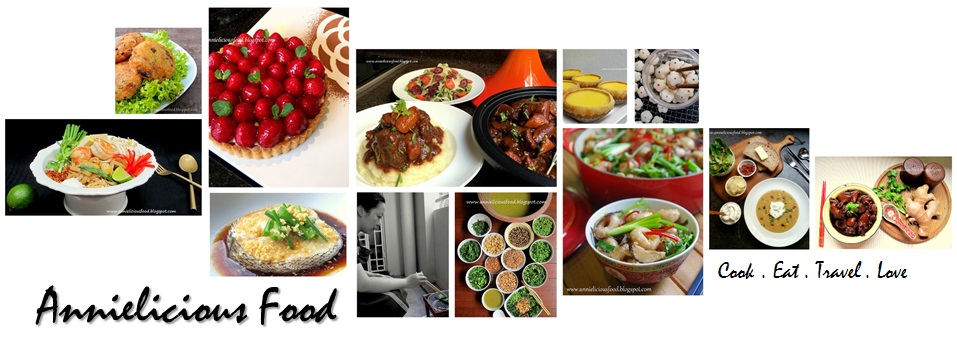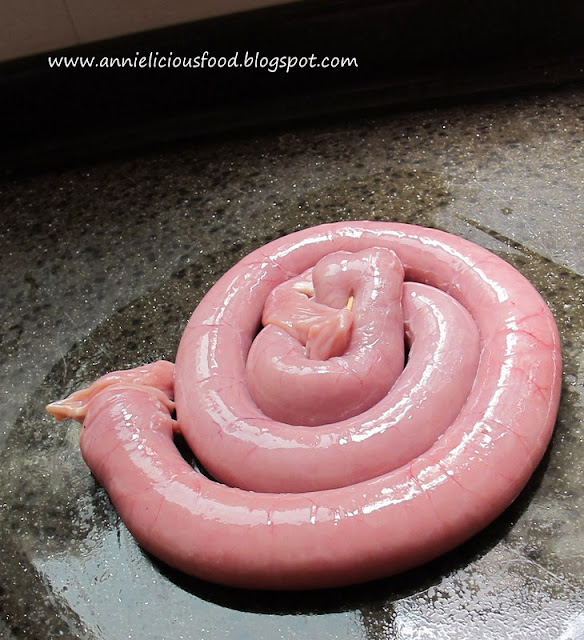A good claypot chicken rice must have fluffy grains of rice, cooked in claypot under raving hot charcoal fired pits, so as to produce an aroma and rice crusts that gas stove can't produce. For those who stayed in Kampar, you guys should know charcoal fire claypot chicken rice is one of the signature dish in Kampar.
Claypot chicken rice is my 3rd featured dish for Perak's Malaysian Food Fest, focusing on Wing Lok Yuen coffee shop's delicacies located in the heart of Kampar. And yes! That's the legendary and the original Heng Kee claypot chicken rice (庆记瓦煲鸡饭) that I'm talking about.

With the 50 years of history, this is the 3rd generation of the original Heng Kee Claypot Rice in Wing Lok Yuen coffee shop in Kampar. I make a trip back to Kampar last month and I purposely pay a visit to this coffee shop. Look at those claypots, look at those charcoal fire, and look at the 3rd generation boss at work. I intentionally took some photos to post it here.

I've ordered a pot of rice to share with my mom, hoping to find back the old memory. Unlike before, the rice grain that they used is rather ordinary long grain. I seen lots of broken rice grain in there. It's at the lumpy and sticky side. I think, they probably not even jasmine rice or thai hom-mali type of fragrant rice. But well, it's not surprising. Doing business nowadays, cutting cost for raw materials is one of their priority I guess.

The verdict of this pot of this original claypot chicken rice? Just like the olden times, Heng Kee's claypot chicken rice still gives the layer of crusted burnt rice at the bottom of the pot. But I'd wished if they could use better rice grain just like last time. The sauces may be a little underwhelming than before. Hence, the rice is not as flavorful and fragrant as before already. And after this experience, I tell myself, I wanted to find back the childhood taste of Heng Kee style claypot chicken rice!
Seriously, when I decided to cook this, I'm actually very stressed up! I'm so so so worried that I won't get it right.
For the sake of finding the right taste, feel and texture, I've gone through 3 attempts. The 1st time, the taste is right, but rice is too wet and lumpy. No feel. I complaint to my mom then. So, after I gather my mom's input, I challenge for the 2nd time. I finally got the taste and the feel right. I managed to get the lup-lup-fan-heong (粒粒饭香) fluffy rice! But still, I think the gees of it is not yet there. I want to make sure the whole texture is right too. So, I cooked the 3rd time, and I finally get it! The childhood time Heng Kee style claypot chicken rice!
So, here's the fine-tuned and final recipe...
Ingredient (Serves 2 to 3)
(Source : My Mother Mdm. Chai's input + Scrumptious rice and porridge cookbook as a reference and comparison)
the rice
- 140g Jasmine Rice / Fragrant Rice
- 70g Basmati Rice
- 260g Water
- 1 tbsp Pork Oil / Lard
- 1 Chicken Leg, about 200g (Refer to below for chicken marinade)
- 1 Chinese Waxed Sausage
- 1 generous thick slice of mui-heong salted fish 梅香咸鱼
- 30g finely chopped ginger
- ½ tsp Salt
- ½ tsp Sugar
- 1 tsp Oyster Sauce
- ½ tsp Dark Soy Sauce
- ½ tbsp Shao-Xing Wine
- 1 tsp Tapioca Starch
- 1 tsp Sesame Oil
- a dash of pepper
- 2 tbsp Pork Oil / Lard
- 1 tbsp White Rice Wine (or Shao-Xing Wine)
- 1 tbsp Soy Sauce
- 1 tbsp Dark Soy Sauce (depends on how dark you want your rice to be)
- ½ tsp Chicken Powder or a pinch of MSG (optional)
- 1 tsp fried shallots (optional)
- some chopped spring onions (garnishing)
- The claypot size that I'm using is 8.5 inch for external measurement, and about 6.5 inch for internal measurement.
- Chicken meat gives moisture to the rice. If you add more chicken meat, the cooking time would be different, and the wetness of your rice would be different too.
- You can substitute pork oil / lard with fried shallot oil. However, without pork oil / lard, you won't be able to achieve the right taste. Pork oil / lard is one of the important ingredient for this claypot rice.
- Go ahead and opt out the chicken powder or MSG. But I'm very sure that commercial ones have either chicken powder or MSG in it. That's why I stated on my recipe.
- Prepare pork oil / lard in advance. I always did that, and keep them in air-tight container, and kept in the fridge. It comes in handy when I need it. It stored well in the fridge for up to a month or more.
- Wash rice, soak in water for 30mins. Drain thoroughly. Mix well with pork oil / lard. Set aside for another 30mins.
- Meanwhile, clean and cut chicken into pieces. Marinade chicken for 30mins.
- Soak chinese waxed sausage in hot boiling water for 10 mins. Slice, and set aside.
- In a claypot, add in rice and 260g of water. Lid on, and cook over medium high heat until water almost dried up, but still wet and small holes starts appearing. This takes about 6 to 7mins.
- Open lid, arrange chicken pieces, salted fish and sausages on top of the rice. Cover the lid. Lower the flame to low heat. Place a piece of tin cover on top of the flame. Put the claypot on top and let it cook for another 13mins or so. Or if you want thicker layer of crust, you may want to consider to leave it there for another minute.
- To serve, remove claypot from heat, pour over seasoning and garnish with spring onions. Mix thoroughly and serve IMMEDIATELY.
This is the trick that my mom taught me. Go hunt for a piece of tin cover (Milo tin or Milk powder tin or whatever tin cover you can find). Place it on top of the flame. Put the claypot on top of the tin cover and let it cook for another 13mins. This will guarantee nice rice crust at the bottom without over-burning them. This trick is workable on the stove-top too.
My 1st attempt. Used only jasmine rice. It taste good, but rice too soft and at the wet side. It doesn't achieve the fluffiness that I used to eat during the old times. Nope! Not right! Max complained that this shouldn't be the way. And hell, I know. Sigh!
Claypot rice is cooked! This is photo is my 2nd attempt. My mother is very true about the mixing of jasmine rice and basmati rice. Without mixing in the basmati, it won't able achieve this.
Yumms! Fluffy and fragrant claypot rice! This is the lup-lup-fan-heong 粒粒饭香 feel that we used to had during our childhood times. The good old times feel is back!
Take a closer look...
If you are a claypot chicken rice lovers, I'm sure you would attest to the fact that the layer of rice crust at the bottom is absolutely heavenly treasure to you. The truth is that, in order to achieve that layer of crust, certain level of technique is needed. Rice must not be too wet (but must not under cooked), fire must be nicely controlled to avoid overly-burnt aroma that mars the whole experience.
For my rice crust, I'm glad that I did it pretty well, although it is not perfect, not as good as Heng Kee's one maybe. But oh well, I'm pretty satisfied for this 2nd attempt result. I didn't take photo for the 3rd attempt. At least, from foodie to amateur cook like me, this very close to what I'm looking for. I'm happy enough :)
Unlike amateurish version of claypot chicken rice out there, some with sticky and lumpy overcooked rice, or some under-cooked grains (which I will curse when I ate them), this method of cooking claypot rice is really worth a try as the texture of the rice is just perfect. You don't need chopped bird's eye chillies or extra dash of soy sauce. The fluffy and flavorful rice was a joy to be relished on its own. And when complemented with the meats, needless to say, the excitement was heightened by a few notches!
Do give this a try. I'm sure you will love it :)
I am submitting this post to Malaysian Food Fest Perak month hosted by WendyinKK of Table for Two….or more.















































